Stay connected with practitioners developing new methods to awaken.
Subscribe for insights, exercises, and updates.
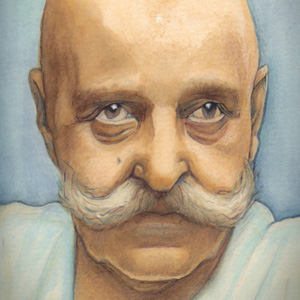
Part I: The Messenger
In 1912, a short and powerfully built man, with a shaved head and a long, black, curled mustache, set foot in a Moscow cafe…

Anna Butkovsky-Hewitt
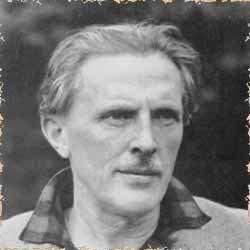
John Bennett


Anna Butkovsky-Hewitt

Charles Nott
[JEANNE DE SALZMANN] “The first impression was very strong, unforgettable. He had… an intelligence, a force, that was different… You felt he would see you and show you what you were in a way you would never forget in your whole life.”iv

John Bennett
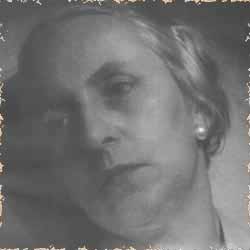
Jeanne de Salzmann
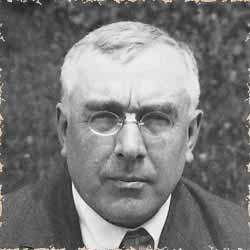
Peter Ouspensky
George Ivanovich Gurdjieff startled the European intelligentsia with a comprehensive psychological, philosophical, and cosmological teaching of ancient origin. He seemed to be stepping into the 20th century from another era, bringing with him wisdom that had been all but lost in the floods of time.
He soon attracted a crowd of accomplished people, artists, doctors, lawyers, authors, teachers, many of which had been searching for truth and meaning for years. So, from the very beginning it is clear that they could recognize something in him they had each sought, but had not yet found.

Charles Nott

Jeanne de Salzmann

Peter Ouspensky



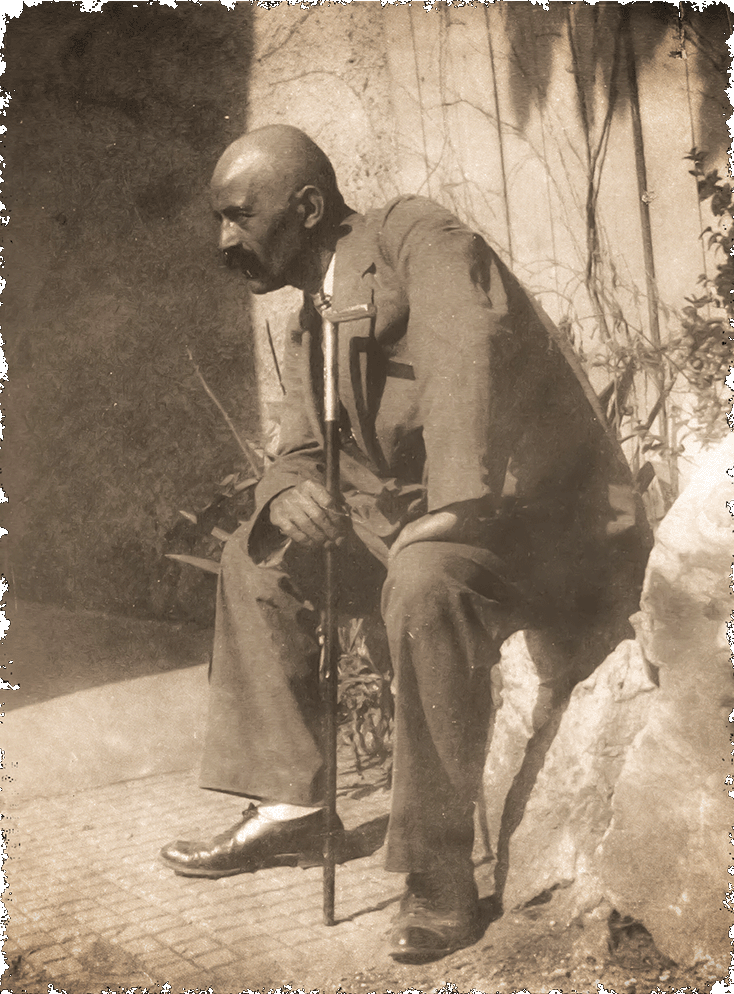
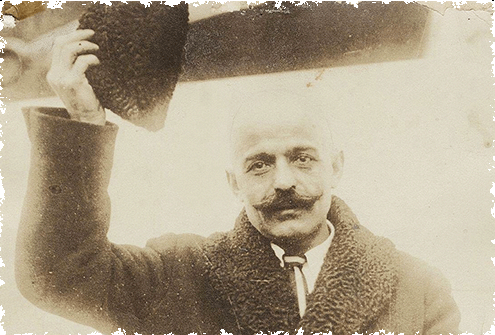
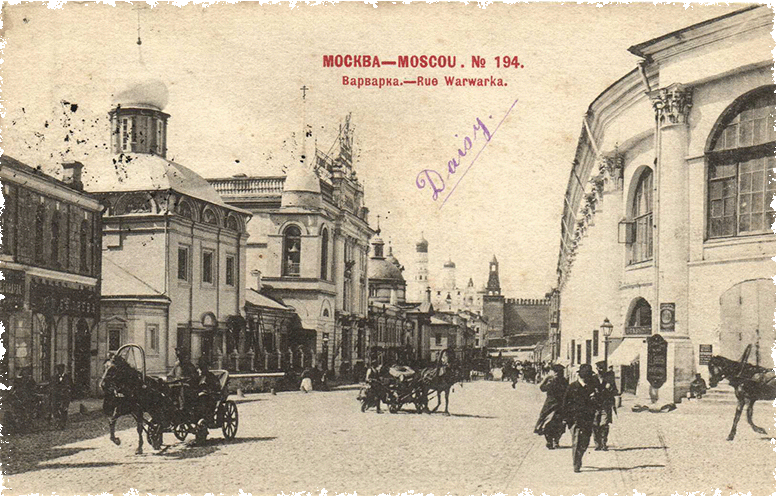

GEORGE GURDJIEFF
(1866-1949)

Gurdjieff’s Formative Years

Biblical Flood
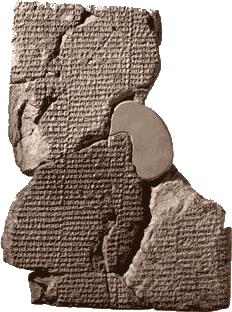
Sumerian Flood Tablets
Gurdjieff was born in 1866 in Alexandropol, present day Armenia. His ancestors were shepherds who had immigrated from Capadocia, Turkey. His father lost his flock during a cattle plague, moved eastward, and became a carpenter.
[GURDJIEFF] “My father was widely known as an Ashokh… a local bard who composed, recited or sang poems, songs, legends, folk-tales, and all sorts of stories.”vi

Gurdjieff’s Father Giorgios Giorgiades
The Flood Myth
One of the legends Gurdjieff hears in his childhood from his father is the Epic of Gilgamesh. This is a 4000 year old story which is the precursor for many of the Biblical myths that come later, and with which we are much more familiar.
The Epic of Gilgamesh had been wholly forgotten for centuries, until the mid-nineteenth century, archaeologists excavated tablets with inscriptions in the site of ancient Nineveh, in present day Iraq. When the texts were deciphered a generation later, their discovery attained worldwide fame. Among them was an account of the flood that predated the Biblical story of Noah.
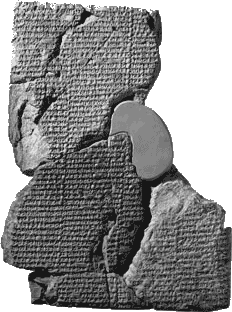
Sumerian Flood Tablets

Biblical Flood
This was in the 1870s, and Gurdjieff mentions reading of this discovery in his youth, in a magazine.
[GURDJIEFF] “When I realized that here was that same legend which I had so often heard as a child… in almost the same form of exposition as in the songs and tales of my father, I experienced such an inner excitement that it was as if my whole future destiny depended on all this.”vi
Gurdjieff couldn’t have known the age of his father’s stories as he was hearing them told. Suddenly he realizes that his father has been preserving a very ancient tradition. If shepherds were entrusted with preserving legends for many generations, then which other truths might exist, handed down mysteriously from one age to another, unsuspected by contemporary mankind? We see here the spark that ignites Gurdjieff’s search for truth. He will dedicate the next twenty years to fulfilling this impulse.
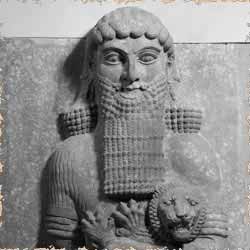
Gilgamesh

Gurdjieff’s Father Giorgios Giorgiades

Gilgamesh




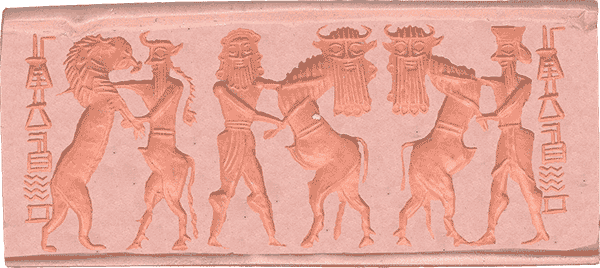

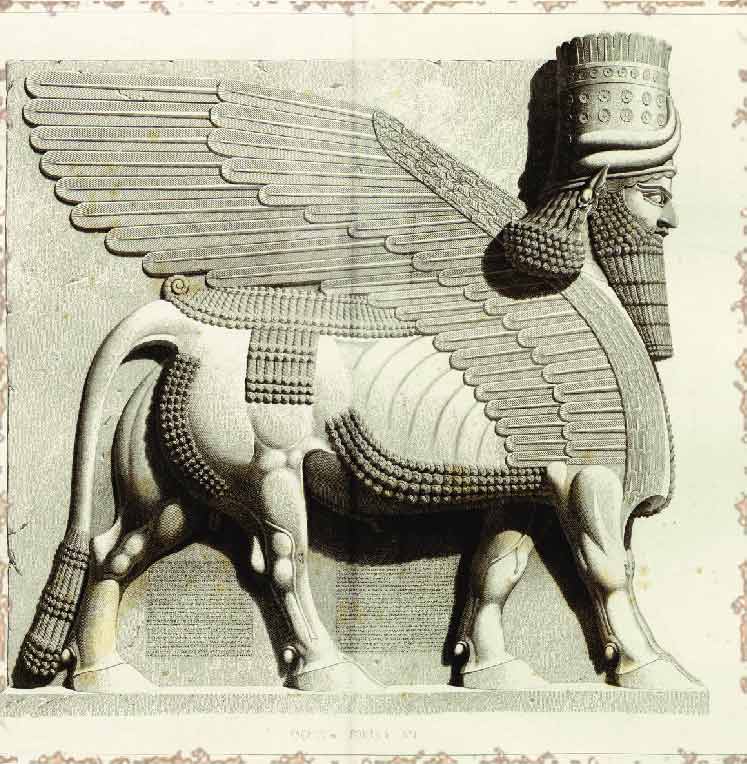

GILGAMESH
𒀭𒉋𒂵𒈩

Gurdjieff’s Search for Truth

Human as Three-Brained Being
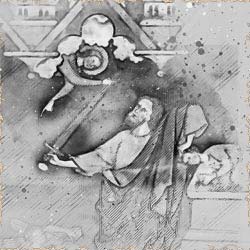
Sacrificing Illusion
Middle East, Central Asia, and Far East
[JOHN BENNETT] “When we come to examine the full range of ideas, doctrines, methods and techniques that Gurdjieff brought to the West, we may well doubt if one man could have accomplished so much. He himself tells us that a group effort was responsible.”vii

Human as Three-Brained Being
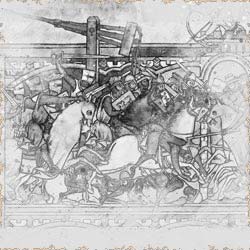
Development From Multiplicity to Unity
At an early age, Gurdjieff undertakes expeditions in search of hidden knowledge. By one account, he groups with 15 to 20 other ‘Seekers of Truth.’ By another, the group comprises three — out of which one is Gurdjieff himself — and these three gradually attract more members. Within the ranks of these ‘Seekers’, Gurdjieff embarks on journeys to the Middle East, Central Asia, and the Far East.
In narrating these travels, Gurdjieff freely bends fact toward myth to convey different principles behind the search itself.

Sacrificing Illusion
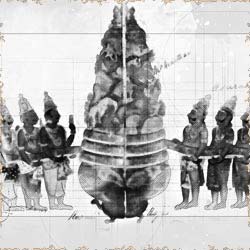
Struggle Between ‘Yes’ and ‘No’
Principles Behind the Search for Truth
For example, the principle of Payment, that one cannot value knowledge unless one makes effort to obtain it. The principle of Discovery, that the deeper truths about the human being and the world cannot be learned in a classroom, but have to be discovered, the effort of piecing together what one finds itself being the lesson. And the principle of esotericism, that in the broad ocean of the worlds great traditions — Christianity, Islam, Buddhism, and so forth — there were always small pockets of people who held the keys to the truth.
[GURDJIEFF] “The theory of esotericism is that mankind consists of two circles: a large, outer circle, embracing all human beings, and a small circle of instructed and understanding people at the center. Real instruction, which alone can change us, can only come from this center.”viii
The Seekers of Truth gradually narrow down their search to this inner circle in the form of an ancient Babylonian brotherhood named Sarmoung. Gurdjieff is eventually admitted to the chief monastery of the brotherhood, where we are led to understand that he receives answers to his deepest questions and concludes his search.

Development From Multiplicity to Unity

Struggle Between ‘Yes’ and ‘No’



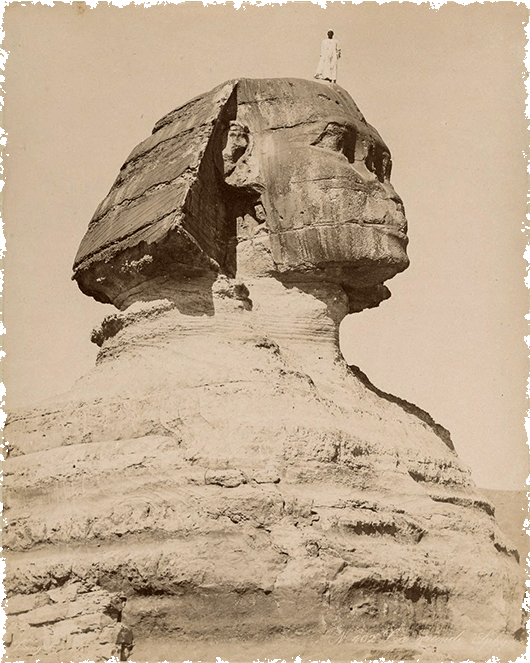
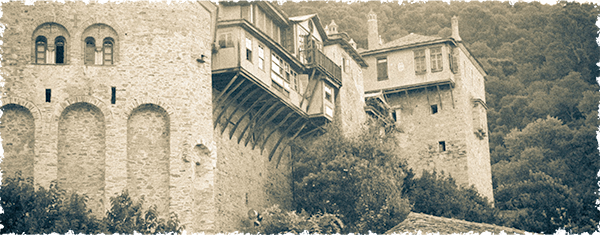
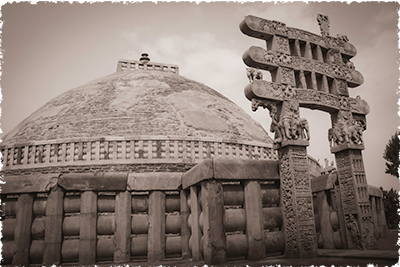

GURDJIEFF’S SEARCH
(1890?-1910)

Gurdjieff Begins Teaching in the West
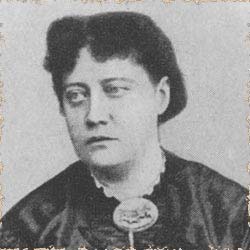
Helena Blavatsky

Olga de Hartmann
When Gurdjieff arrives in Russia, the idea of esotericism is not new. A generation before him, Helena Blavatsky, the founder of the Theosophy, has already promoted the idea of an inner circle that she had contacted in Tibet.

Helena Blavatsky
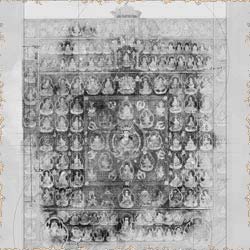
Circles of Humanity
So that mysterious man stepping into a cafe in Moscow was arriving at an opportune time. On the one hand, notions of an Inner Circle of Humanity were already circulating within the intelligentsia, and on the other hand, soon after his arrival, the world would undergo half a century of devastation that would effectively destroy any contemporary relics of ancient knowledge, rendering a man who had methodically gathered them an exclusive distributor.
He imported so many ideas never heard before in the mystical mainstream of the Western World. Ideas about the structure of the human being, about our state of ‘sleep,’ our possibility of awakening, and our place in the greater scheme of the universe.
[PETER OUSPENSKY] “Many things which Gurdjieff said astonished me… I was most of all interested in the connectedness of everything he said. I already felt that his ideas were not detached one from another, as all philosophical and scientific ideas are, but made one whole, of which, as yet, I saw only some of the pieces.”v
[THOMAS DE HARTMANN] “The wish to be with Mr Gurdjieff now became the only reality. Ordinary life, which had been reality, continued, but it seemed almost unreal… My life became a sort of fairy-tale.”ix

Olga de Hartmann
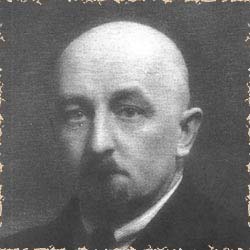
Thomas de Hartmann
[PETER OUSPENSKY] “I thought about that in the night train, on the way from Moscow to Petersburg. I asked myself whether I had indeed found what I was looking for. Was it possible that Gurdjieff actually knew what had to be known in order to proceed from words or ideas to deeds, to “facts”? I was still not certain of anything, nor could I formulate anything precisely. But I had an inner conviction that something had already changed for me and that now everything would go differently.”v
[OLGA DE HARTMANN] “Mr Gurdjieff was an unknown person, a mystery. Nobody knew about his teaching, nobody knew his origin or why he appeared in Moscow and St Petersburg. But whoever came in contact with him wished to follow him, and so did [my husband Thomas] and I.”ix
.
Frequently Asked Questions
What is Gurdjieff’s philosophy?
What is the meaning of the Fourth Way?
– The way of the fakir – focuses on mastering the physical body.
– The way of the monk – focuses on mastering emotions.
– The way of the yogi – focuses on mastering the mind.
By contrast, the Fourth Way works on all three aspects simultaneously — body, emotion, and mind. Unlike the three traditional ways, which typically require their practitioners to withdraw into monasticism or reclusiveness, the Fourth Way challenges its practitioners to bring conscious discipline to their everyday lives. It is an ancient way that has changed many times throughout history. Its structure is never permanent but adapts to the needs and opportunities of each era.
What is the Law of Three in Gurdjieff’s teaching?
1. active force
2. passive or resisting force
3. neutralizing or reconciling force
These three forces are present in every process. They govern both physical and metaphysical interactions. For something new to come into being, these three must come together. And they can come together in different ways, which affect the outcome of the process or triad. Gurdjieff saw this triadic pattern as a core law of the universe, shaping everything from creation to individual psychology.
Who influenced Gurdjieff?
1. Individual people who influenced his early development.
2. Ancient sources he tapped into and from which he formulated his presentation.
3. Individual students who influenced and assisted his teaching.
The individual people who influenced Gurdjieff’s early development are featured in his autobiography Meetings with Remarkable Men. The book is broadly divided into chapters each dedicated to a person who influenced him in his youth, or who assisted in his search for truth, such as his father or first tutor. That said, some of his closest pupils have argued that this book should not be taken literally and that Gurdjieff invented many of these characters to personify certain aspects of seekers on the path to awakening.
The ancient sources Gurdjieff tapped into, and from which he formulated his presentation, were diverse. In some cases Gurdjieff openly mentions them, in other cases only thorough research reveals their presence in his teaching: Ancient Egypt, Ancient Mesopotamia, Tibet, Central Asian customs, Christianity, Judaism, Sufism, Hinduism, and Buddhism. Gurdjieff allegedly learned the inner meaning of these great traditions in various secret brotherhoods he encountered during his travels in the Middle East, Central Asia, and the Far East.
Gurdjieff’s closest students would also inevitably influence him and his presentation. In his early years of teaching, Gurdjieff relied on Peter Ouspensky for structure and organization of the ideas. Later in his life, he delegated more responsibility to students like Jeanne de Salzmann, who would continue his institute after his death.
What did Gurdjieff say about Jesus?
Gurdjieff did incorporate many of the teachings of Jesus into his presentation, and when he did so, he always interpreted them symbolically. For instance, he cited Jesus’ saying in the Gospels that ‘man’s name is legion’ to mean the fragmented and nonunified condition of undeveloped human beings.
Did Gurdjieff write music?
What language did Gurdjieff write in?
Notable books include:
– Beelzebub’s Tales to His Grandson
– Meetings with Remarkable Men
– Life is Real Only Then, When ‘I Am’
Was Gurdjieff an occultist?
What did George Gurdjieff believe in?
Gurdjieff’s foundational attitudes behind his teaching were:
– Humans are asleep and must wake up through inner work.
– Real transformation is possible but extremely difficult.
– Self-remembering and conscious suffering are key tools.
– Ancient traditions contain hidden esoteric truths that instruct about this awakening.
– The purpose of life is to become unified and serve a higher need.
Sources
- With Gurdjieff in St. Petersburg and Paris by Anna Butkovsky-Hewitt
- Teachings of Gurdjieff: A Pupil’s Journal by Charles Stanley Nott
- Witness by John Godolphin Bennett
- The Reality of Being: The Fourth Way of Gurdjieff by Jeanne de Salzmann
- In Search of the Miraculous by Peter Deminaovich Ouspensky
- Meetings with Remarkable Men by George Ivanovich Gurdjieff
- Gurdjieff: Making a New World by John Godolphin Bennett
- Views from the Real World by George Ivanovich Gurdjieff
- Our Life with Mr. Gurdjieff by Thomas and Olga de Hartmann

Circles of Humanity

Thomas de Hartmann

Stay connected with practitioners developing new methods to awaken.
Subscribe for insights, exercises, and updates.
Continue Reading:
Part II:
The Teaching
Part III:
The School
Part IV:
Initiation
Part V:
Fourth Way